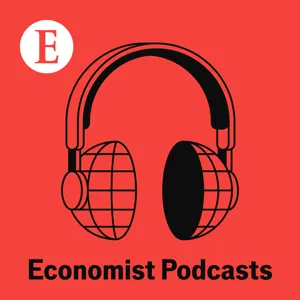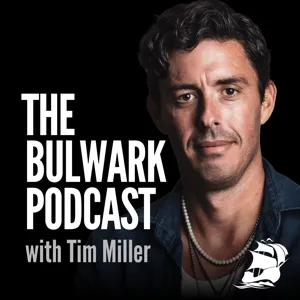Podcast Summary
Understanding the White Power Movement's Influence on Far-Right Extremism: Historian Kathleen Belew explains how the white power movement's ideologies and tactics have influenced the rise of far-right extremist groups like the Proud Boys, QAnon, and those involved in the Capitol insurrection, connecting past and present instances of racist violence.
The once fringe ideas and theories of far-right extremist groups have increasingly infiltrated mainstream politics and media. This trend is evident in the rise of household names like the Proud Boys and QAnon, as well as the storming of the Capitol by a crowd of militant extremists and Trump supporters. Kathleen Belew, a historian at the University of Chicago, helps explain this phenomenon by exploring the concept of "white power" and its connections to past and present instances of racist violence. According to Belew, recent events like the Unite the Right rally in Charlottesville and the January 6th Capitol insurrection represent big, public-facing moments of organized white power and militant right action. While the Unite the Right rally was largely focused on the fringe, the January 6th event was more complex, involving a collision of the organized white power and militia movement, QAnon followers, and other militant right groups. Belew's research on the white power movement across time provides valuable insights into the roots of these eruptions of radical far-right violence.
White supremacist groups adapt symbols and actions to gain acceptance: White supremacist groups change their symbols and actions to appeal to wider audiences and gain public acceptance, using everything from overtly racist symbols to more subtle, ironic ones. The lack of condemnation or overt participation by the GOP since Charlottesville has emboldened these groups.
White supremacist groups have been opportunistic in their use of symbols and performative actions to recruit and gain public acceptance. This was evident in the difference between the August 12th Unite the Right rally and the January 6th Capitol riot. While the former featured overtly racist symbols like Nazi flags, the latter used symbols like "don't tread on me" and "Make America Great Again" that were more in line with typical Trump rallies. This change in iconography was deliberate, as these groups aim to calibrate what is publicly acceptable and potentially recruit new members. Additionally, the lack of condemnation or even overt participation by the GOP since Charlottesville has emboldened these groups, allowing them to present themselves in a more acceptable light. The use of humor or ironic symbols is also a tactic employed by some white supremacist groups to attract new members, as seen in the alt-right and the Boogaloo movement. It's important to remember that these performative acts are not just costumes, but calculated strategies to further their agenda.
White supremacist groups use cultural trends and fashion to recruit members and spread ideologies: Historically, white supremacist groups have used cultural trends and fashion to recruit members and spread their radical ideologies. They've also employed planned violence and intimidation to gain attention and further their cause, as seen in events like Charlottesville and January 6th.
Historical white supremacist groups, such as those active during the 1920s and more recently during events like Charlottesville and January 6th, have effectively used cultural trends and fashion to recruit members and spread their radical ideologies. These groups have also employed planned violence and intimidation as tactics to gain attention and further their cause. A notable example is the novel "The Turner Diaries," which provided a blueprint for overthrowing the U.S. government through incremental acts of violence and revolution. The low body count during events like January 6th was likely intentional, serving as a targeted action to draw public attention and recruit new members rather than a mass casualty attack.
The Influence of 'The Turner Diaries' on the Capitol Attack: The January 6th Capitol attack was influenced by extremist literature, particularly 'The Turner Diaries,' which inspired radicalization and recruitment among seemingly ordinary people, expanding the reach of the white power movement.
The events of January 6th at the Capitol building were influenced by extremist ideologies and literature, specifically "The Turner Diaries," which depicts a violent overthrow of the government. This fictional work was widely disseminated among white supremacist groups and individuals throughout the years, and its themes of instant radicalization and targeted recruitment resonated with seemingly ordinary people. The white power movement has operated using a concentric circle model of organization since the 1980s, with a small core of deeply dedicated activists, a larger group of supporters, and a larger, more diffuse group of people who may agree with their ideologies. January 6th represented an even bigger concentric circle, reaching a larger audience and pulling more people into the movement. The events of that day created a powerful shared experience that resonated with people, leading to lasting affinities and radicalization.
The White Power Movement: A Connected and Diverse Social Movement: The White Power Movement, which includes various extremist groups, is a larger and more connected social movement than many realize, with core ideas of impending racial apocalypse, anti-immigration, anti-abortion, anti-LGBTQ, anti-integration, and anti-government sentiment.
The white power movement, which emerged in the aftermath of the Vietnam War and continued through to the present day, is a larger and more connected social movement than many realize. This movement, which includes various extremist groups such as the Klan, Neo-Nazis, skinheads, militias, and radical tax resistors, is not just rural or suburban, but also urban, and exists across class divisions and educational backgrounds. The core set of ideas animating this movement is a sense of impending racial apocalypse, with concerns about a decreasing white birth rate, anti-immigration, anti-abortion, anti-LGBTQ, anti-integration, and anti-government sentiment. The term "white power" is used to describe this movement because it is what these activists called themselves and better conveys the urgency and revolutionary nature of their anti-democratic and violent ideology. Additionally, research shows a connection between warfare abroad and political violence at home, making it challenging to address extremist violence in the United States without stigmatizing veterans.
The aftermath of warfare fuels radicalization in white power movements: Veterans and active-duty troops bring expertise and resources to white power movements, leading to an increase in violence and radicalization. The white power movement's shift towards revolutionary tactics in 1983 was driven by frustration over infiltration and resource drain.
The aftermath of warfare can lead to an increase in violence and radicalization, as seen in the history of white power movements in the United States. This is due in part to the expertise and resources brought by veterans and active-duty troops to these groups. The historical record shows that this phenomenon is not limited to any specific demographic and can be observed across age, gender, and racial lines. The white power movement's declaration of war on the federal government in 1983 was a significant turning point, marking a shift towards revolutionary tactics such as leaderless resistance and cell-style terrorism. This change was driven by frustration over infiltration by law enforcement and the drain on resources from court prosecutions. Prior to 1983, these groups had claimed to serve the state, but the decision to become revolutionary led to a new power dynamic within the movement.
White power activism as a social movement: White power activism has evolved from a closed door movement to one that sees electoral politics as an open door, with the internet playing a crucial role in its evolution. Deep platforming projects can help slow down its influence.
White power activism, although it may operate through decentralized networks and use the internet extensively, should not be viewed as a collection of lone wolves but as an ideological social movement. This movement, which began declaring war on the federal government in the 1980s, has evolved and become more porous, with its ideas and beliefs increasingly permeating mainstream politics. This porousness is evident in the fact that, unlike in the 1980s and 1990s when political activism was seen as a closed door, today's activists see electoral politics as an open door. The internet played a crucial role in the movement's evolution, with the creation of proto-Internet message boards like Liberty Net in the 1980s. While it may be impossible to completely unring the bell of these groups' online presence, deep platforming projects can help slow down their influence. The January 6th Capitol attack was a stark contrast to the declaration of war on the federal government in the 1980s, with some participants openly identifying as white supremacists, while others may have been motivated by loyalty to Trump or saw the event as an opportunity for their own purposes. The blurring of the lines between extremist ideas and mainstream politics is a complex issue, and it's important to remember that labeling individuals as white supremacists requires them to claim that identity.
The Visibility and Divisiveness of White Supremacy and Inequality in the 21st Century: The election of Barack Obama, rise of social media, and global war on terror contributed to the visibility and divisiveness of white supremacy and inequality in the US. Despite widespread beliefs of progress, overt racial violence and polarization around racial resentment emerged, highlighting the need for ongoing dialogue and action.
The history of white supremacy and inequality in the United States, which has long been a subtext in our politics, became more visible and divisive during the 21st century. The election of Barack Obama, the rise of social media, and the global war on terror were among the historical push factors that contributed to this trend. Despite widespread beliefs that the US had moved beyond race and racism, overt racial violence and polarization around racial resentment emerged. The author argues that these developments can help us understand the political landscape leading up to the Trump years and the challenges we face in addressing these issues moving forward. The rapid unfolding of events, such as Charlottesville, underscores the need for ongoing dialogue and action to confront the problem.
The Fear of Demographic Change and White Power Movements: The fear of demographic change is a significant driver of white power movements, rooted in the belief that race equals nation and white purity is under threat. This fear has been present in mainstream politics for decades and contributes to a sense of urgency and anti-system sentiment.
We are living in a time of significant political and social upheaval, marked by a strong anti-system sentiment and a density of major events and historical changes. One such change is the fear of demographic change, which is experienced as an existential threat by certain ideologies, particularly those associated with white power movements. This fear is rooted in the belief that race equals nation, and a decrease in the white birth rate is perceived as a strike against this nation. Women are seen as symbols and instruments of white purity and are therefore central to this performative politics. This fear of demographic change has been present in mainstream politics as well, with figures like Pat Buchanan and the publication of Alien Nation in the 1990s contributing to the mainstreaming of this narrative. Understanding this history and the sense of urgency it creates is crucial for making sense of the politics of our time.
The Great Replacement theory's harmful impact on race relations: The Great Replacement theory, fueled by fear and racism, falsely claims a deliberate plan to reduce white political power and birth rate, leading to dangerous consequences for people of color.
The white power movement is capitalizing on fears and concerns about demographic changes, particularly the idea of becoming a white minority, and distorting them into extreme and harmful beliefs. This theory, known as the Great Replacement, posits that there is a deliberate plan to reduce the political power and birth rate of white people, often framed as a conspiracy by a secret cabal of elites. Tucker Carlson's explicit discussion of this theory on his show marks a concerning incursion of white power ideas into the mainstream. The theory is rooted in anti-Semitic beliefs and has dangerous consequences for people of color. Despite claims that it's about politics, it's clear that it's primarily about race and fueled by a sense of panic on the right. It's important to acknowledge and challenge these harmful beliefs to prevent them from gaining more traction.
Victimization and Fear Shape Contemporary Politics: Victimization and fear fuel apocalyptic beliefs, driving political polarization and violence. Apocalypticism can manifest differently based on issues, leading to varying outcomes.
...the sense of victimization and fear of losing what they perceive as their rightful place in the world shapes contemporary right-wing politics, fueling increasingly extreme and apocalyptic beliefs. This feeling of being a victim opens the door for more radical ideologies to gain traction. Apocalypticism, which is deeply rooted in our culture, is not limited to the right, but also present on the left, with issues like climate change and economic transformations. The intensely polarized conversations about these threats and the lack of collective historical dialogue contribute to the proliferation of apocalyptic narratives. While apocalypticism around climate change encourages collaboration and global citizenship, fear of demographic change can lead to isolation, violence, and encampment. Political violence, including that from the right and left, becomes more legitimate when the stakes are perceived as incredibly high. It's crucial to recognize the differences in how apocalypticism manifests and the consequences it brings.
Media's False Equivalence of Violence between Antifa and Right-Wing Extremists: The media's portrayal of equal violence between Antifa and right-wing extremist groups is misleading and harmful, as the latter has a much more violent history and a greater threat to public safety.
The media's tendency to present equal sides of an issue, even when the facts show a significant disparity in violence and destructive actions, can be irresponsible and harmful. The discussion highlighted the differences between the movements of Antifa and right-wing extremist groups, with the latter having a much more violent history and a greater threat to public safety. However, political rhetoric and media narratives often blur the lines, suggesting false equivalence and minimizing the seriousness of right-wing violence. This not only misinforms the public but also serves the interests of extremist groups. For instance, the Black Lives Matter movement, while experiencing violent reactions and property destruction, is not comparable to the organized, armed, and deadly actions of right-wing extremists. The increasing hostile and potentially violent mood in American politics is a serious concern, with studies showing a significant number of Americans justifying political violence. The events of January 6th, 2021, serve as a stark reminder of the potential consequences of this trend.
Erasing the Trauma of White Power Violence: White power violence persists despite Jan 6 events, erased through misinformation and distortion, hope lies in deradicalization and public awareness, staying informed and engaged is crucial.
Despite the dramatic events of January 6, 2021, and the clear threat of white power violence, the movement has been able to erase the trauma and minimize the consequences through misinformation and distortion. The reasons for this are complex, including the overwhelming amount of information we are exposed to daily and the deep historical distortions surrounding white power violence. However, there are signs of hope, such as the growing attention being paid to deradicalization and the demand for resources to help people leave the movement. Ordinary people, journalists, and local communities all have a role to play in keeping the issue in the public view and creating resources to support those in need. It will be a long and difficult process, but staying informed and engaged is a crucial first step.
Understanding the commonalities between targeted communities: Recognize commonalities between communities targeted by white power violence, build coalitions, share resources, and reach out to each other for political gain.
It's important to recognize the commonalities between communities that have been targeted by white power violence, such as the Tree of Life shooting, Charleston shooting, El Paso shooting, and Christchurch attack. These incidents are often labeled as anti-Semitic, anti-Black, anti-Latino, and anti-Islamic, respectively. However, it's crucial to remember that all of these communities have experienced white power attacks, and they can benefit from building coalitions, sharing resources, and reaching out to each other for political gain. Another recommendation for better understanding this movement is to read Kathleen's book, "Bring the War Home." For those interested in history, Elaine Tyler May's "Fortress America" is an excellent read about the role of fear and violence in politics and daily life in the late 20th century. For those thinking about the apocalypse, Louise Erdrich's "Future Home of the Living God" is a recommended novel. Lastly, Jennifer Holland's "Tiny You" is a history of the anti-abortion movement in the Four Corners States, but its implications go beyond that, shedding light on how politics has entered various aspects of our lives, including homes, churches, and schools.






